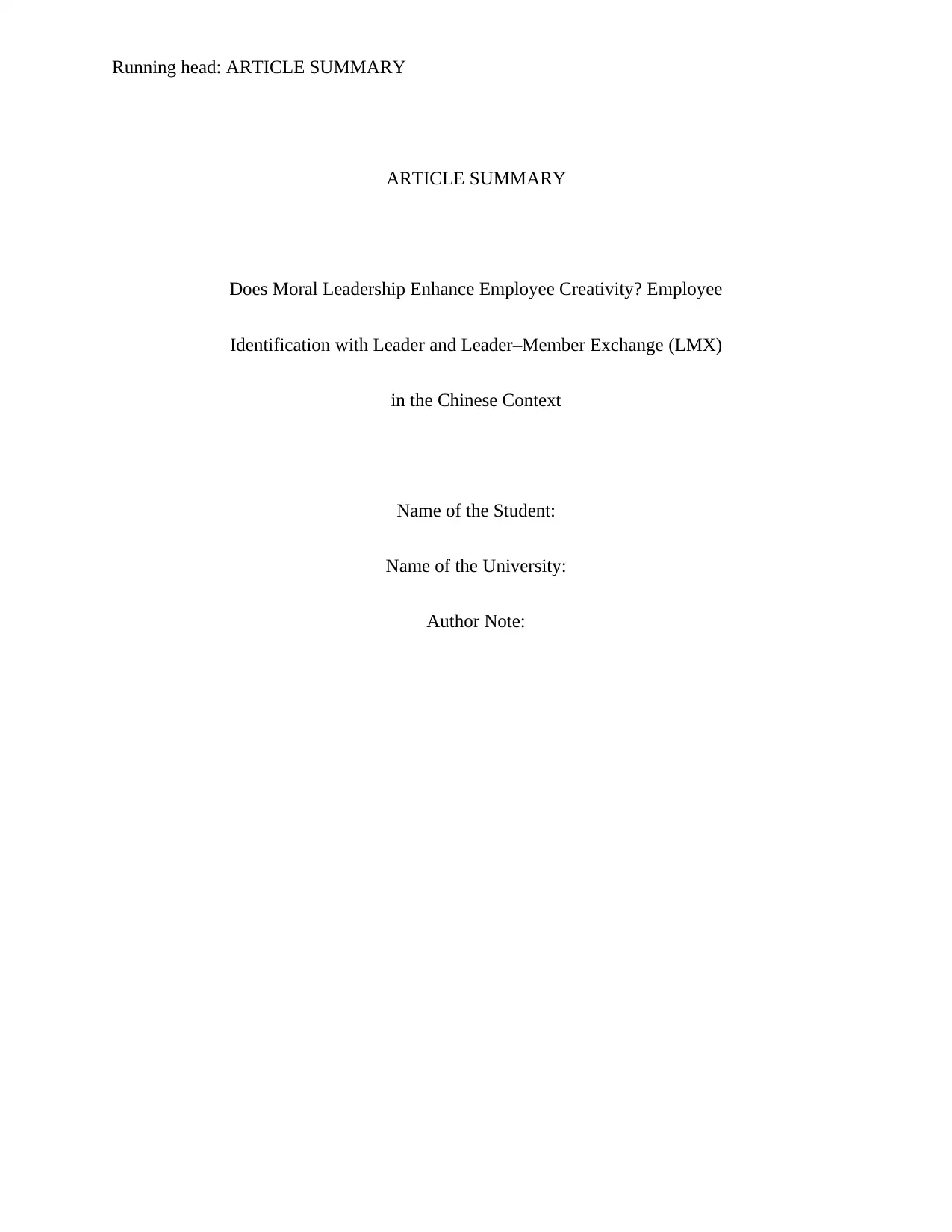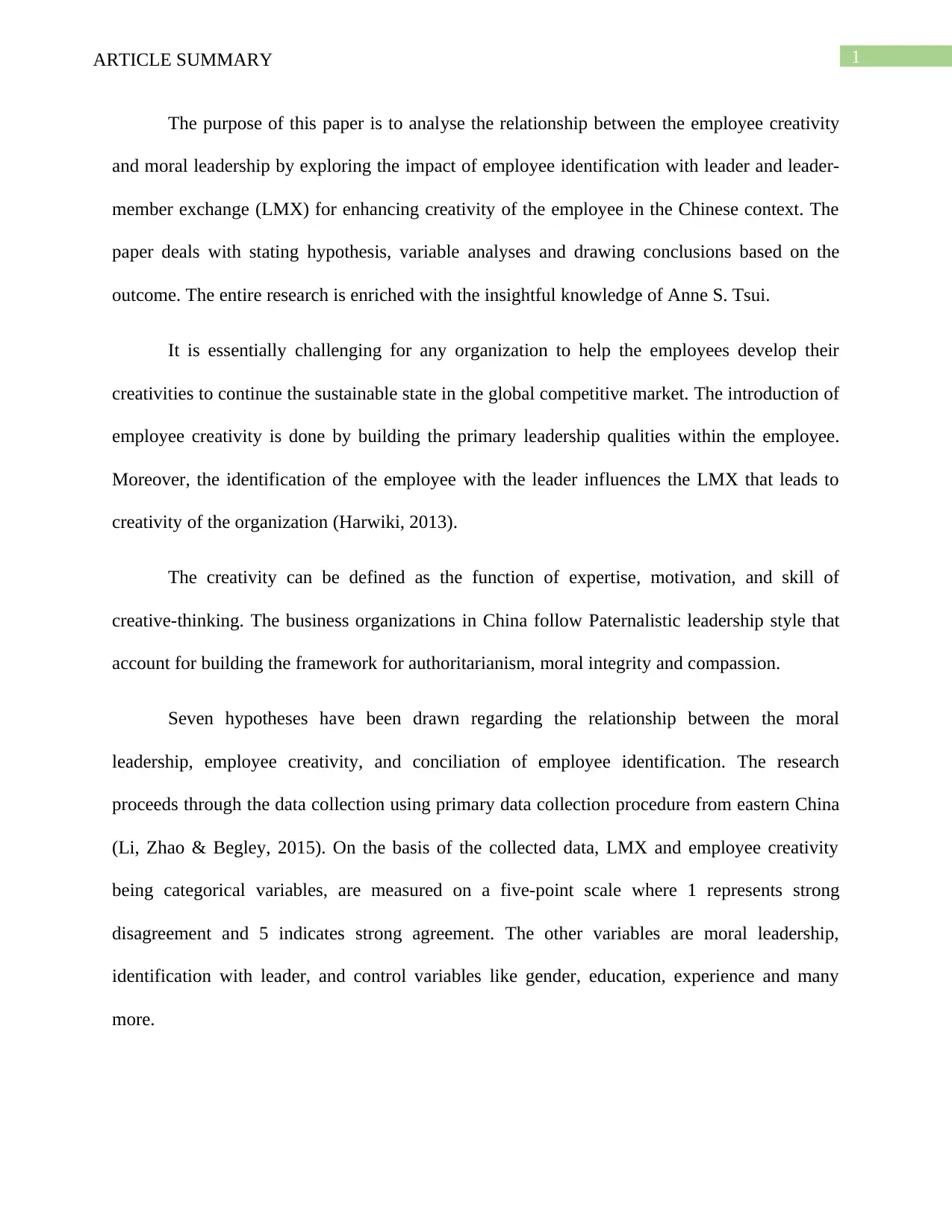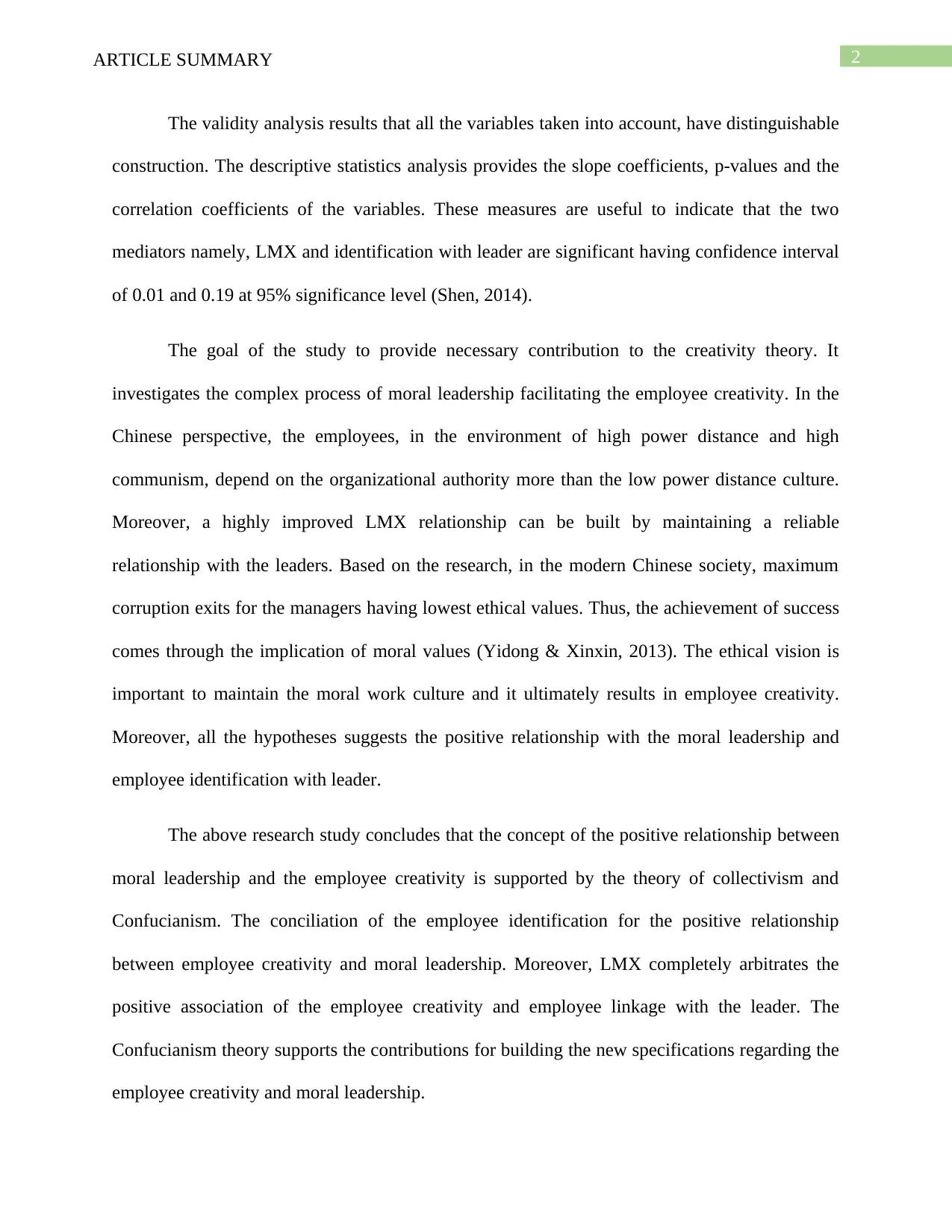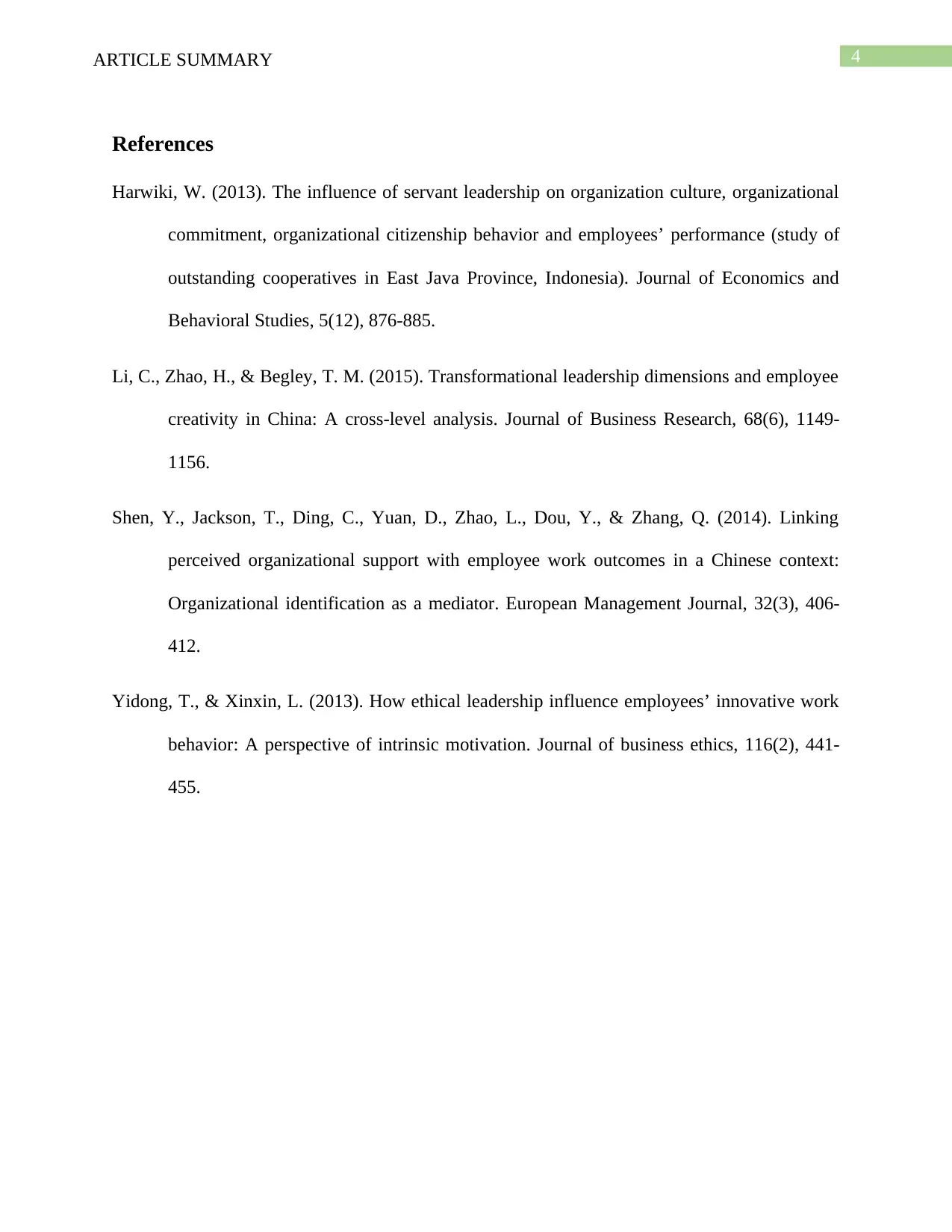Article Summary: Moral Leadership's Impact on Employee Creativity
VerifiedAdded on 2023/06/10
|5
|853
|499
Summary
AI Summary
This paper provides an analysis of the relationship between moral leadership and employee creativity, focusing on the impact of employee identification with leaders and leader-member exchange (LMX) within a Chinese context. It explores how fostering primary leadership qualities within employees and nurturing their identification with leaders can influence LMX, ultimately leading to enhanced organizational creativity. The research employs primary data collection from eastern China, utilizing a five-point scale to measure LMX and employee creativity alongside other variables like moral leadership and demographic controls. The study's findings contribute to creativity theory by investigating the intricate process of moral leadership facilitating employee creativity, particularly within the context of high power distance and collectivism prevalent in Chinese society. It emphasizes the importance of ethical values in maintaining a moral work culture, which in turn fosters employee creativity, supported by the principles of collectivism and Confucianism.
1 out of 5












![[object Object]](/_next/static/media/star-bottom.7253800d.svg)